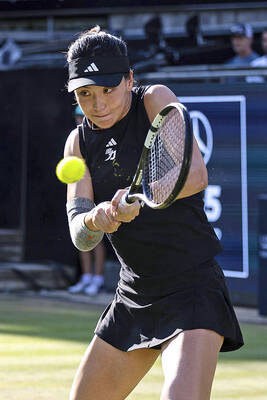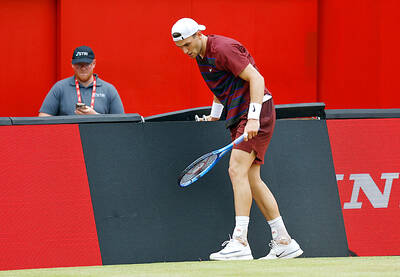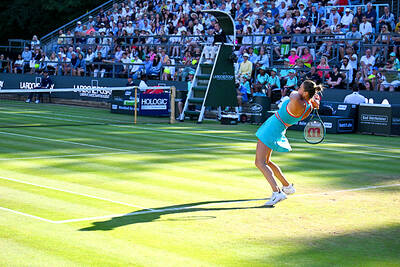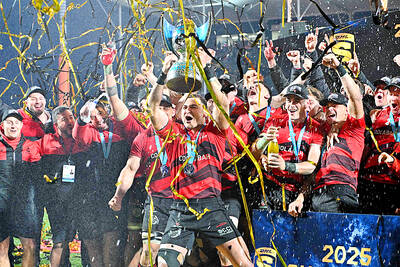Faster, higher, stronger: Scientists, too, are doing their bit to make the Olympic motto real. Here are some potentially performance-boosting discoveries, just in time for the Rio Games:
SHOES OR NO SHOES?
In the decades since Ethiopia’s Abebe Bikila (Olympic marathon gold, 1960) and South Africa’s Zola Budd (5,000m world record, 1985) raced barefoot into sporting history, debate has raged over the wisdom of runners spurning shoes.
Many athletes insist that sneakers alter their natural gait and hamper performance. Some have reverted to running without shoes, while others have turned to minimalist “barefoot shoes.”
Statistics suggest that increasingly souped-up kicks have not reduced injury rates.
In a recent study published in the Journal of Sport and Health Science, Spanish scientists asserted that barefoot running can “considerably” decrease the risk of being hurt.
Runners with shoes tend to crash down on their heels while barefoot runners land on the mid and forefoot, where the in-built shock absorbers in the arch soften the trauma.
Scientists from the universities of Granada and Jaen studied more than 30 volunteers who had never run barefoot before, while training them to do so over 12 weeks.
The runners significantly altered their ground-strike pattern, the team found, switching away from the heel-first landing.
Done correctly, barefoot running minimizes impact force and “therefore, leads to a lower risk of injury,” study coauthor Victor Soto said.
However, this does not mean all runners must immediately hang up their boots.
Barefoot running requires a special technique, without which athletes might expose themselves to other dangers — including rocks, nails and glass shards.
S OR I?
It comes as no surprise that the arms are key to success in the crawl stroke. However, it is not muscle alone, a recent study found — the “shape” of the stroke is key.
Seeking to settle a long-standing argument, scientists from Japan and Australia compared the so-called I and S-shaped downstrokes in the freestyle front crawl.
Among their tools: a robot arm executing different strokes, allowing the team to measure forces on the hand and flow fields in the water around it.
The I stroke sees the arm follow a straight line through the water, from the front where it enters the water, to the back where it exits again.
By contrast, the S stroke draws a double-bellied curve — the arm enters the water near the head, strokes outward, back inward and out again at the hip as it exits.
The S stroke, popular in the 1960s and 1970s, has largely fallen out of favor. However, the new study found it might still have a place.
“S stroke is better suited for swimming middle and long distances, while the I stroke is better for short distances,” study lead author Hideki Takagi of the University of Tsukuba’s School of Health and Sport Sciences told reporters.
The S stroke yields more propulsive power for less physical exertion, while the I stroke delivers maximum speed in short bursts when energy efficiency is not important, he said.
INS AND OUTS
The knuckleball, a bizarre zigzagging ball flight that has stumped many a batsman and goalkeeper, has been demystified.
Scientists from the Ecole Polytechnique in Paris have figured out why knuckleballs bamboozle athletes in some sports, such as soccer, volleyball or baseball, but not others such as table tennis.
Unlike “spin” used in cricket by turning the ball with the fingers or wrist, knuckleballs must be launched with the least amount of spin to achieve their unpredictable side-to-side motion.
Using a wind tunnel and high-speed cameras, the French team observed that all spinless balls follow a zigzag trajectory — a major surprise.
This was the case even for sports in which knuckleballs were thought not to exist, such as squash and basketball, said Baptiste Darbois, who coauthored the study in the New Journal of Physics.
The team then turned to math for an explanation.
They found that when the shooting distance is too short, as in handball or basketball, or when the zigzag width is much smaller than the ball diameter, as in tennis and table tennis, the effect is not strong enough to befuddle the receiver.
A knuckleball must also hit just the right velocity, at which “drag crisis” kicks in and the layer of air around the ball becomes turbulent — a sweet spot that is easier to find in certain games, such as soccer.
Unfortunately, understanding the science will not help those who have to face these balls, Darbois said.
“Our study shows that the lateral deviations of zigzag paths remain unpredictable and thus knuckleballs will always be a nightmare for receivers,” he told reporters.
However, the findings might be useful for ball designers, whether they want to boost or diminish the knuckleball effect.

Twelve days after winning her second Grand Slam title at the French Open, Coco Gauff fell at the first hurdle on grass in Berlin on Thursday as beaten Paris finalist Aryna Sabalenka advanced to the quarter-finals. Recipient of a first round bye, American Gauff lost 6-3, 6-3 to Chinese qualifier Wang Xinyu as world number one Sabalenka beat Rebeka Masarova 6-2, 7-6 (8/6) in her second round tie. Winner of 10 main tour titles, including the US Open in 2023 and the WTA Finals last year, Gauff has yet to lift a trophy in a grass-court tournament. “After I won the first

While British star Jack Draper spent the past week trying to find rhythm and comfort in his first grass tournament of the season at the Queen’s Club Championships in London, Jiri Lehecka on Saturday bulldozed everything in his path. After more than two furious hours of battle, their form was reflected in the final scoreline as Lehecka toppled a frustrated Draper, the second seed, 6-4, 4-6, 7-5 to reach the biggest final of his career, against Carlos Alcaraz. Lehecka is also the first Czech to reach the men’s title match at Queen’s since Ivan Lendl lifted the trophy in 1990. Draper, who

Top-ranked Aryna Sabalenka staged a “crazy comeback,” saving four match points before beating Elena Rybakina 7-6 (6), 3-6, 7-6 (6) in the quarter-finals of the Berlin Open on Friday. Sabalenka was 6-2 down in the final-set tie-breaker, but won six straight points to reach her eighth semi-final of the season. “Elena is a great player and we’ve had a lot of tough battles,” Sabalenka said. “I have no idea how I was able to win those last points. I think I just got lucky.” “I remember a long time ago when I was just starting, I won a lot of matches being down

The Canterbury Crusaders edged the Waikato Chiefs 16-12 in an intense Super Rugby Pacific final battle in Christchurch yesterday to claim their 15th title in 30 years of the Southern Hemisphere competition. Hooker Codie Taylor scored a try and Rivez Reihana contributed 11 points from the kicking tee as the most dominant team in Super Rugby history extended their perfect home playoff record to 32 successive matches since 1998. The Chiefs, who were looking for a first title since 2013, scored first-half tries through George Dyer and Shaun Stevenson, but were unable to register a point after the break and fell to